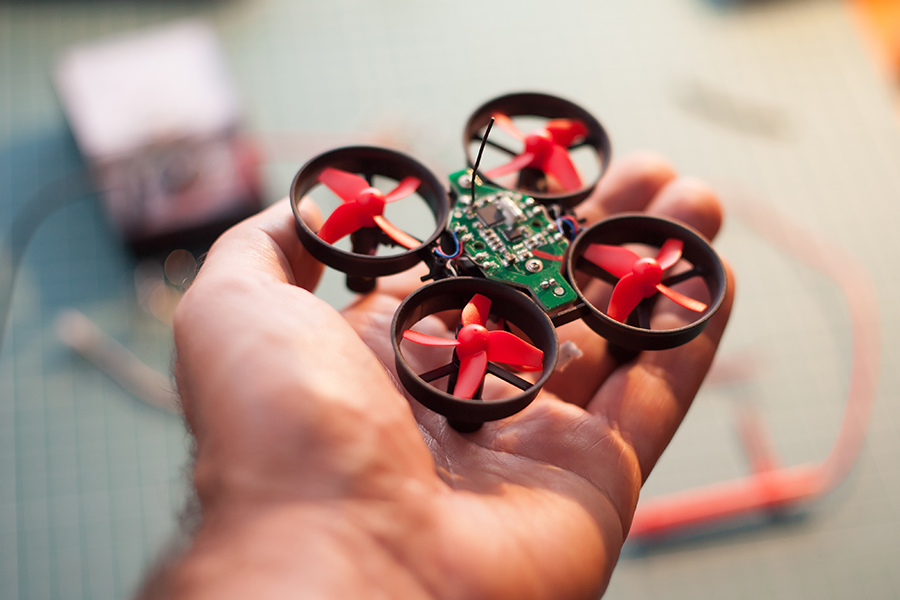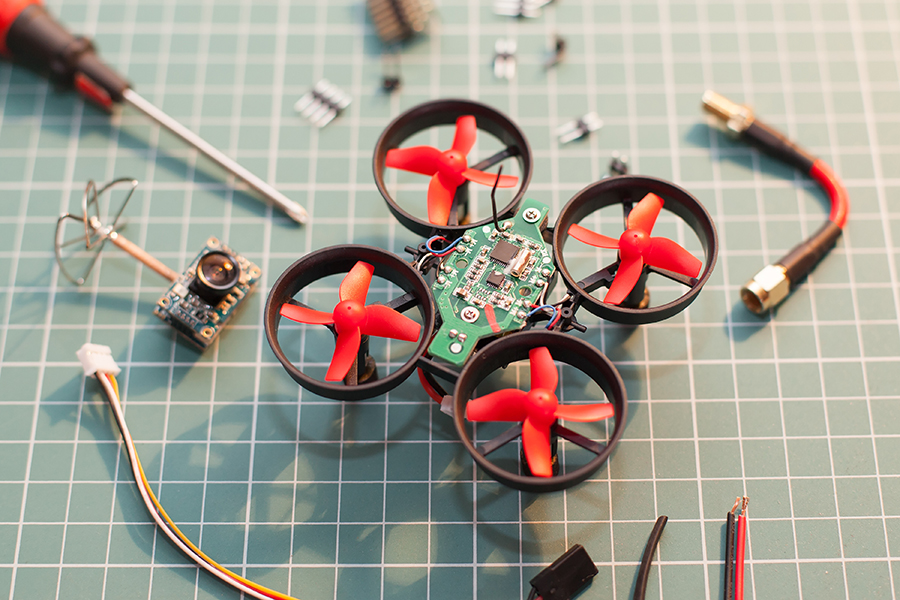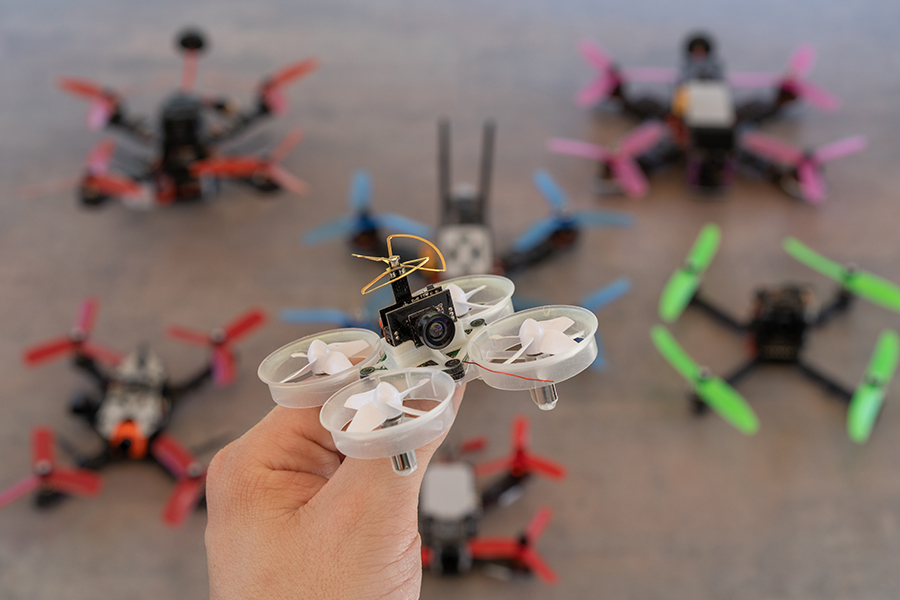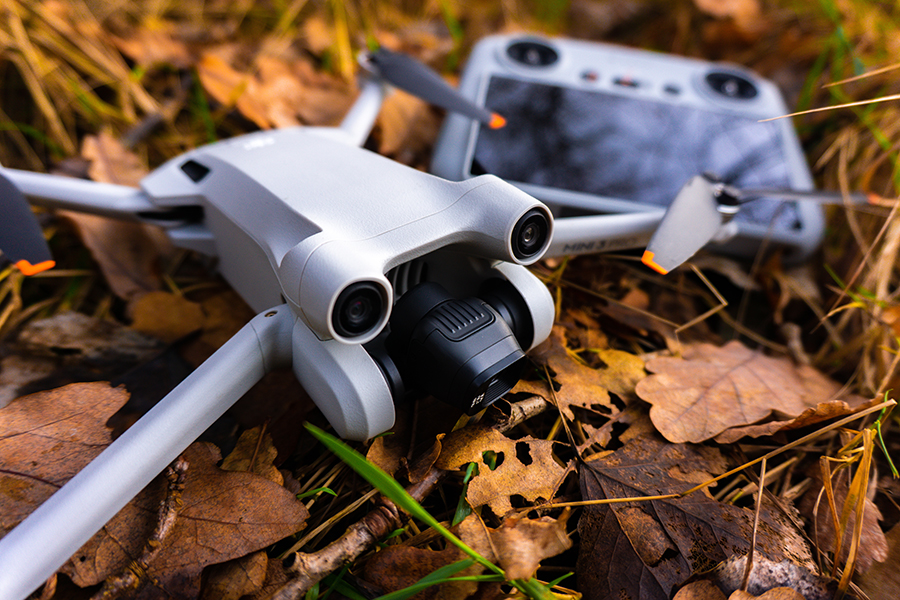CineWhoop drones are typically small and lightweight drones characterized by ducted propellers and smooth flight. They are designed for cinematic filmmaking, particularly in tight spaces and indoors. Most CineWhoop drones are built in DIY fashion, but pre-built CineWhoops are becoming increasingly more common.
With the leaked details of the soon-to-be-released DJI Avata, there has been a surge of interest in CineWhoop drones. This is a very specific and relatively uncommon sub-group of drones that are designed for safe and smooth cinematic recording. What exactly are CineWhoop drones and what are the advantages of flying one?
The History of the CineWhoop

The term “CineWhoop” is actually a modification of TinyWhoop – the small drones that many drone pilots started with. Aside from being small, TinyWhoop drones come with ducted propellers that help with flight performance and make them safe to fly indoors. Despite off-the-shelf drones being very popular now, there are still some very active communities out there who are into DIY TinyWhoop builds.
The “Cine” modifier comes from the fact that CineWhoop drones are specially designed for video capture. The first officially recognized CineWhoop was the ShenDrones Squirt, a small and lightweight drone that can be equipped with a GoPro camera. The Squirt also came with the propeller ducts that TinyWhoop drones were known for.
It is also common for CineWhoop drones to be operated in FPV mode. This involves having an FPV camera that is separate from the HD camera used for video capture. This makes it possible to navigate through small indoor spaces, even while the drone is no longer within the pilot’s visual range.
Building DIY CineWhoop drones is still very common nowadays. The components are inexpensive and easy to find. There are also lots of active CineWhoop communities out there that are ready to dispense assistance to beginners. Even the ShenDrones Squirt is still a staple of CineWhoop pilots today.
However, there is also an emerging market for pre-built ready-to-fly CineWhoop drones. Brands like BETAFPV have become quite popular in this space. More recently, there have been leaks about a CineWhoop drone that will be launched by DJI called the DJI Avata. This perhaps signals the entry of CineWhoop drones into the mainstream drone market.
What makes CineWhoop drones special?
CineWhoop drones may look a little raw and rudimentary compared to commercial ready-made drones, but the groups of avid CineWhoop users can attest that they have excellent uses. Why are CineWhoop drones highly valued for cinematic filmmaking?
Compact and lightweight
Most CineWhoop drones are significantly larger than their TinyWhoop counterparts, but they are still very small and light. The standard CineWhoop drones have propellers that measure 3 inches across, significantly smaller than the 5-inch propellers of regular drones. At this size, it’s easy to carry around 2 or more CineWhoop drones in a single backpack or carrying case. These are great if you’re always on the go or if you offer a commercial drone service that requires constant traveling.
Smoother flight
A central element of CineWhoop drones is the ducts around the propellers. A distinction has to be made here between propeller guards and propeller ducts. While guards provide protection from and for the propellers, propeller ducts actually improve flight performance on top of providing protection.
This means that the propellers and ducts of CineWhoop drones have to be designed according to fairly stringent specifications. Propellers have to be made specifically for CineWhoop drones and there must be sufficient clearance between the propeller and duct.
When done right, CineWhoop drones are very stable in flight, helping them to capture smooth video footage. This stable flight performance can be further enhanced with the use of third-party stabilization software. The use of propeller ducts also gives CineWhoop drones more lift, allowing them to carry standalone cameras like the GoPro.
Safe to fly indoors
The propeller ducts of CineWhoop drones make them safer to fly indoors, in tight spaces, and even close to people. Propeller ducts are typically made of durable but flexible material that can absorb a significant amount of force. The material used is usually TPU with some sort of foam-like bumper.
CineWhoop drones are considered the go-to tool for doing aerial walkthrough videos of interior spaces, possibly for real-estate advertising. They are also great for action shots because they can fly closer to people without posing as much of a danger.
Full manual operations
Most shelf-bought drones struggle with flying indoors because of obstacle avoidance sensors and flight stabilization mechanisms that rely on GPS positioning. A CineWhoop drone has no such problems. It is a drone that is operated completely manually without the help of sensors or smart systems.
This also means that a CineWhoop drone is typically not the kind of drone that you would put in the hands of a beginner. This is the type of drone that will take some practice to use, but it opens up a whole new world of cinematic drone filmmaking once you learn how to handle it.
Customizable builds
There are thousands of parts out there that you can buy for CineWhoop drones from the frame and ducts to the propeller motors and FPV cameras. There is something very satisfying about building your own drone from carefully selected parts and optimizing it to fit your needs and flight style. You can build multiple CineWhoop drones or just modify your existing ones.
It bears noting that many professional drone photographers use CineWhoop drones to complement other camera drones. CineWhoop drones are great for flying around tight spaces, but you would not want to send one up 300 feet to capture the skyline.
Build or buy?
If you want to fly a CineWhoop drone, you have two choices – to buy them pre-built or to build one yourself.
Building a DIY drone

Most of the people using CineWhoop drones today have gone through the process of building the drones themselves. This simply gives them better control over what the drones can do and leaves the possibilities open for upgrading the drones in the future. It’s also a great way to learn how the different components of a drone work together.
The biggest caveat of building your own drone is that it will certainly involve a steep and possibly frustrating learning curve. Not only will you need to learn how to put together a drone from its parts, but you will also need to practice how to fly a custom-built drone. The difficulty ramps up if you want to fly in FPV.
The flight characteristics of a lightweight drone with propeller ducts are very different, especially if you have gotten used to flying GPS-stabilized drones. Since they are so small and light, CineWhoop drones are more affected by wind dynamics. Achieving smooth flight with CineWhoop drones is often described as flowing with the wind instead of resisting it. This is a balance that takes experience to develop.
Buying a pre-built drone
This does not mean that buying a pre-built CineWhoop drone is the inferior option. Pre-built CineWhoop drones are ready to fly out of the box, and can even come with important accessories such as controllers and FPV goggles. Pre-built drones save you the time and effort of building a CineWhoop drone and are not necessarily more expensive either.
More recently, there have been leaked details about the DJI Avata, a CineWhoop drone made by global drone brand DJI. This drone weighs about 500 grams, has a GPS receiver, flies for about 18 minutes on a single battery cycle, and features the usual ducted propellers that make it safe to fly indoors. It comes with a camera that can capture 4K resolution videos and an intuitive motion controller that certainly sounds fun.
With the entry of DJI into the CineWhoop market, it certainly seems like this niche drone type is about to catch the mainstream spotlight. From this point on, it would no longer be surprising to see lots of people buying pre-built CIneWhoop drones.
Final thoughts
CineWhoop drones are pretty much the love-child of FPV drones, camera drones, and TinyWhoop drones. These are small drones that are designed to be safe to fly indoors and in other tight spaces, and can capture smooth and cinematic videos. CineWhoop drones are powerful tools in the hands of a skilled drone pilot and photographer.
For the longest time, most CineWhoop drones have to be built from individual parts. Now that DJI is entering this market, there will likely be a higher demand for pre-built CineWhoop drones. More variety is always better, and we look forward to the videos that people can take with these small but mighty drones.



